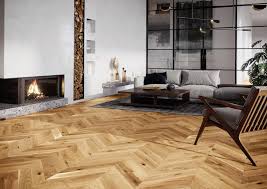Wooden floors, celebrated for their timeless appeal and lasting durability they can also develop gaps with time. These gaps, caused by factors such as fluctuations in humidity or settling in the house, can be visually unattractive and could be a sources of drafts. Understanding how to address gaps in a timely manner will help preserve the beauty and function for your floors. Here’s a comprehensive guide to deal gaps in a wooden floor (drevená podlaha).
1. Identify the Cause
Before working on the gaps it is crucial to identify their cause. The most common causes are changes in humidity, inadequate installation, or natural wood expansion and contraction. The gaps can also be caused by the settling of the house or shifts in the foundation. If you know the cause and the root cause, you can select the best solution to prevent future issues.
2. Control Humidity Levels
Wood is extremely sensitive to changes in humidity. High humidity can cause the wood to expand, whereas low humidity can lead to gaps and shrinkage. Using a dehumidifier, or a humidifier to keep a steady indoor humidity level (ideally between 30 percent and 50%) can reduce the size of gaps. In climates with extreme humidity fluctuations the installation of a complete humidification system may be useful.
3. Use Wood Filler
For smaller gaps fillers made from wood or wood putty could be an effective solution. Select a filler that is compatible with the shade of your wood, and apply it using a putty knife. Fill the space with the filler, then smooth it out and allow it to dry as per the instructions of the manufacturer. Once dry, sand the surface to make sure it has an even surface. Finally, apply a finishing that is in line with the remainder on the floor.
4. Consider a Floor Gap Fixing Kit
For gaps that are larger or with more than one for more gaps, a floor gap fix kit may be the best choice. The kits usually include wooden wedges or shims that can be inserted into gaps. Follow the kit’s instructions for the installation. This method is particularly effective to fill in gaps in engineered wood floors.
5. Reinstall or Replace Boards
In cases where the gaps are significant and frequent, it might be necessary to replace or repair some pieces of wooden boards. This job is more labor intensive and requires professional help, especially when the gaps are due to inadequate installation or severe damage.
6. Regular Maintenance
Regular maintenance is crucial to prevent gaps from occurring. Ensure that your floors are well-sealed and well-maintained. Take action immediately if you notice water damage and floor movement. Routine inspections can help catch problems early before they lead to more extensive gaps.
7. Professional Help
If you’re not sure of the best method to take or if the gaps are vast, contacting the flooring expert can be beneficial. They can assess the situation, recommend appropriate solutions, and make sure that any repairs are done correctly.
If you know the causes and ways to fix gaps in wooden floors, you can keep your flooring looking gorgeous and in good condition for the years to come.


